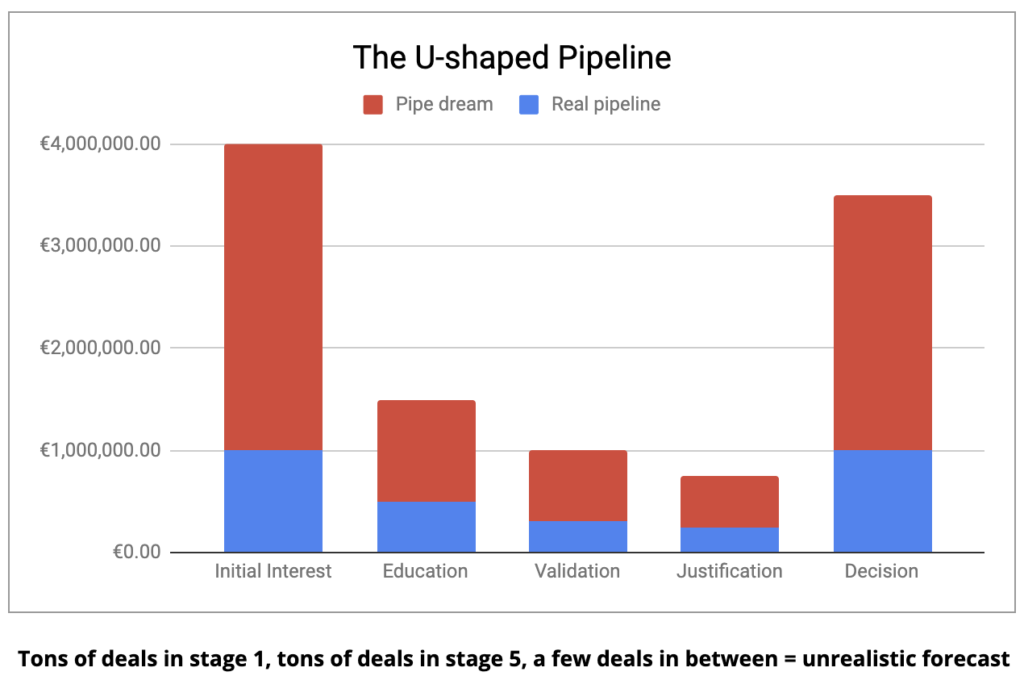How I survived not closing deals for 6 months
From March 2020 to September 2020, I didn’t close a single deal. I made exactly €0.
In today’s newsletter, I’ll share why, how I got back to closing, and what you can learn from my experience.
The first quarter of 2020 was going pretty well. I had closed a few 5-figure deals, mostly from referrals. I wasn’t prospecting at all, and I was convinced business would keep coming without much effort.
As you know, March 2020 triggered a worldwide panic and all the opportunities I had been working on got paused, and eventually cancelled. I was left without pipeline, and I had to start everything from scratch.
In march 2020, I learned one thing:
You should always be prospecting.
No matter your job title, SDR, AE, CSM, if you’re an individual contributor, you cannot ever stop prospecting.
You may find yourself in a situation where your pipeline is massive, and you think you won’t ever need to prospect again. You may have an assigned SDR, or inbound leads thrown at you daily.
This never lasts. Your SDR ends up being promoted, your inbound leads dry out, and you’re left without any opportunity to work on. When that happens (like it did for me), the landing is brutal. For me, it translated into a 6 months slump, and immense self-doubt.
Slumps happen to all of us. And you are more likely to encounter them in a tough economic times. Here’s how I got out of the last one:
Step 1: Set a survival goal
Forget your stretch goals and President’s Club Caribbean trip. When you’re in a slump, your goal is to get out of it quickly enough so you don’t end up fired.
You’re in survival mode.
For me, it meant having enough cash to pay my basic expenses (think salary, website hosting, email marketing, and LinkedIn premium). I cancelled my co-working contract, and I moved back into my living room.
I compared that number with the cash in my bank account, and it gave me my survival goal.
If I can reach it, I’ll live another day, if I don’t, I’ll start looking for a job, if I make more, I can start building my business again.
Step 2: Create a prospecting routine
Now most people stop at setting goals. But without a clear, daily action plan, you’re going nowhere.
I took this survival number and converted it into a daily prospecting target. This is when I came up with the Sales Process Calculator. I found out that finding and adding 5 new prospects per day would get me there.
Then I put a recurring prospecting blocker every morning from 08:00 to 09:00. During this hour, I would:
start with follow-ups
find 5 new prospects
contact them
To this day, I’m still following this routine and prospecting every weekday morning.
Step 3: Stop listening to your inner voice
These 6 months of slump were mentally exhausting. At the beginning, I kept playing doomsday scenarios in my head. What if I didn’t make it? What if I would never book another meeting? What if I couldn’t ever find a new customer.
But instead of focusing on these negative thoughts, I followed my daily prospecting routine. I kept showing up every day, and kept executing the plan. At times it was hard (ask my wife), but things started slowly moving after a few weeks.
I also started collaborating with Skip Miller, and systemized my LinkedIn content production. As a result, my first few deals came in, and I started being recognized on LinkedIn for sharing my journey.
In conclusion, these tough 6 months forced me to pivot, develop strategic partnerships, and move my business online.
And if you’re worried about selling into a recession, I suggest joining Skip Miller, Tom Latourette, and I on the 7th of July 4:30PM CEST.
We’ll talk about why selling in a recession requires a mindset change, how to identify opportunities in a challenging economic environment, and we’ll share tactical tips to qualify and get decisions without delay.
Hope to see you there.
Cheers,
Thibaut
→Work 1:1 with me: If you need help booking more meetings, I can help you. We’ll go through your current situation and what’s not working. We’ll build an action plan to land you more meetings and more money in your pocket. Book me here.
Subscribe to the Newsletter
Get my free, 4 min weekly newsletter. Used by 5.900+ salespeople to book more meetings and work when, where, and how they want.
Subscribe to the Newsletter
Get my free, 4 min weekly newsletter. Used by 5.900+ salespeople to book more meetings and work when, where, and how they want.





